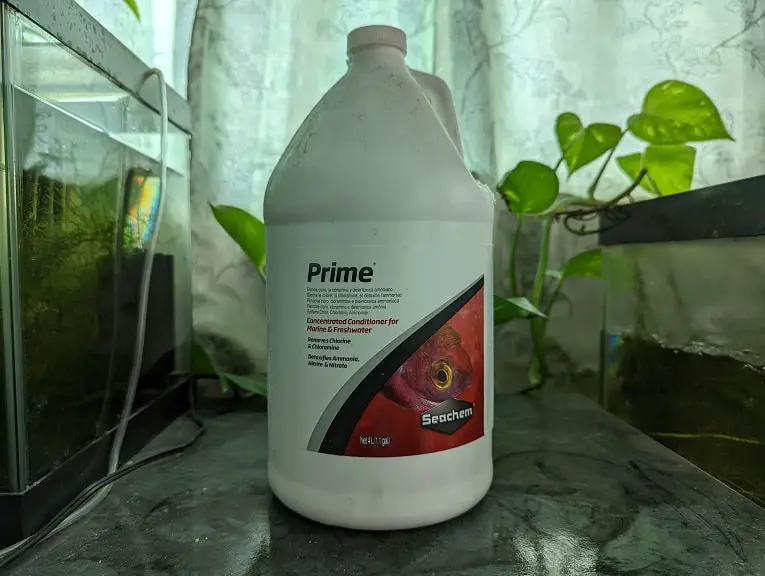With Seachem ParaGuard, you can treat Fin Rot, Flukes (also known as Dactylogyrus trematodes and Monogenenean trematodes), Ich (also known as Cryptocaryon and Ichthyophthirius) in addition to Velvet (also known as Amyloodinium and Piscinoodinium).
If you accidentally overdose this treatment solution, however, then you may run into issues. To see what you can do when you accidentally add too much of the medication in your fish tank, you can check out this troubleshooting guide at Aquarium Blueprints.
How to tell that you overdose Seachem ParaGuard
If you don’t know whether or not you overdosed Seachem ParaGuard in your fish tank, then you can look for the following stress signs from your fish:
- Gasping for air on top of the water line.
- Sudden head twitching.
- Sudden body twitching.
- Sudden darting around the tank unprovoked.
How to fix a tank that has been overdosed with ParaGuard
In order to fix an overdosed of ParaGuard, we recommend that you take the following steps:
Removing your fish from the tank
If some of your fish is reacting really badly to the overdose with twitching and/or darting around the tank, then you might want to net them out and put them in a temporary tank, bucket or container.
How to fix a ParaGuard overdose by doing a water change
The fastest way to make your tank safe again is by doing a major water change. In order to do so, we recommend that you take the following steps:
1. Remove water out of your tank. Try to take out as much volume based on how much you overdosed.
If you added two times the recommended dosage amount (which is 5 mL for every 10 gallons or 40 liters), for example, then you should do a 50% water change.
If you don’t know how much you overdosed ParaGuard, or have a severe overdose, then remove as much of the tank water as possible.
2. Next, you can add new water back into the tank.
If you are using tap water, then make sure you add a dechlorinator, such as Seachem Prime, directly in your fish tank in order to instantly remove chlorine and chloramine. Otherwise, these two compounds will harm the beneficial bacteria in your tank if you don’t remove them in a timely manner.
You should dose 5 mL of Prime for every 50 gallons or 200 liters of tank water that your aquarium can hold.

3. If you are using a filter in your fish tank, then we suggest increasing the water flow. You can also try moving the outtake at or above the water line. These actions will increase the oxygen levels in your fish tank.
Otherwise, the overdose Seachem ParaGuard will deplete the oxygen in your tank, making it hard for your fish to breathe.
Not to mention that, if you added a dechlorinator like Prime when doing a water change to dilute the ParaGuard overdose, then the combination of these two products will also deplete the oxygen levels in your tank.
5. If you have an air stone, then you can increase the air flow and/or move it closer to the top of the water surface to also add more oxygen levels in your tank.
6. After doing a water change and increasing the oxygen intake in your aquarium, you should be able to move back the fish you may have previously removed from the tank.
7. We recommend that you keep a close eye on your pet fish even after diluting ParaGuard with a water change.
8. After 48 hours have passed since taking action on the overdose, the fish tank should be in the clear.
If you are in the middle of treatment of daily dosages, then you should be able to start back where you left off with ParaGuard.
